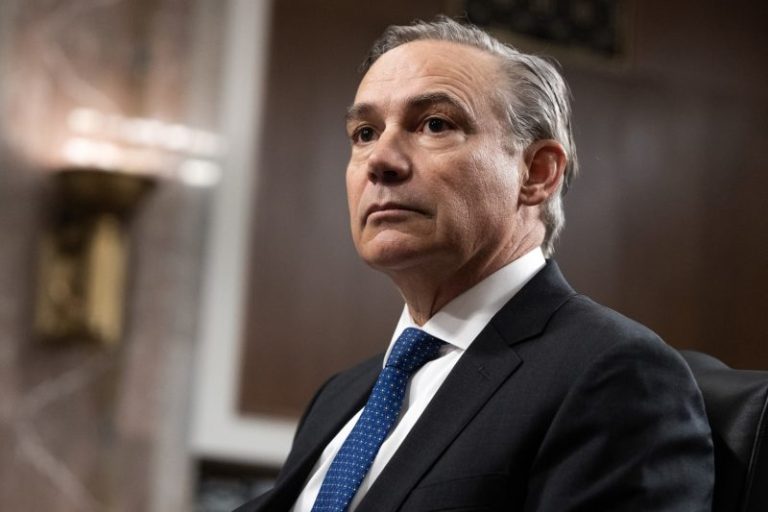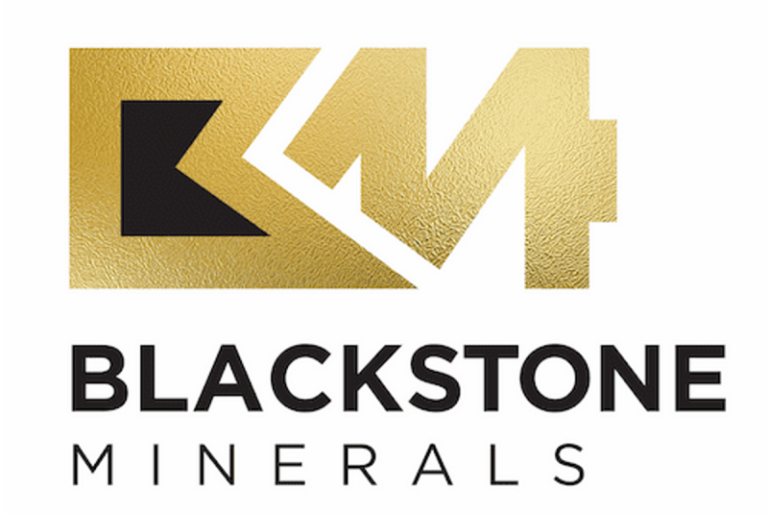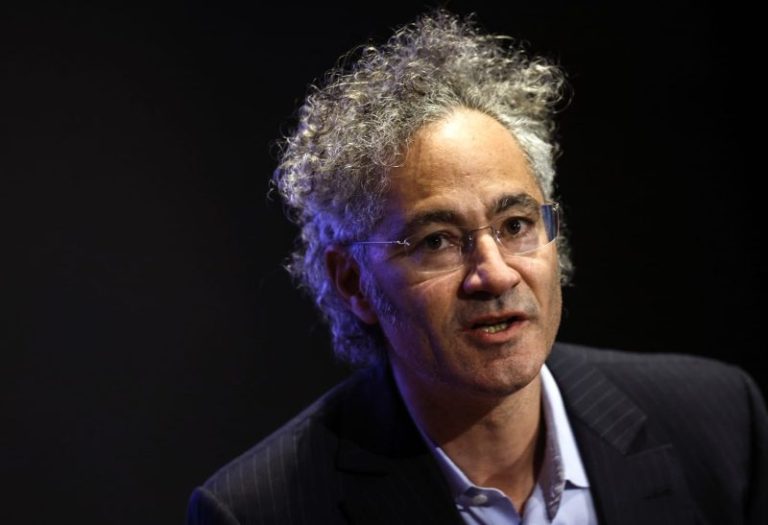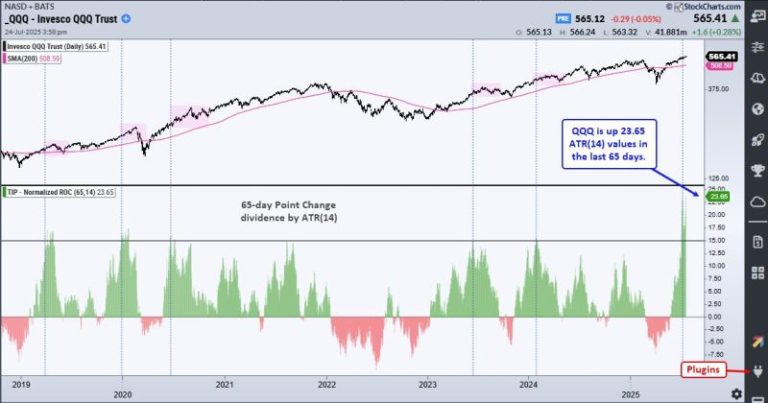After spiraling from crisis to crisis over much of the past seven years, Boeing is stabilizing under CEO Kelly Ortberg’s leadership.
Ortberg, a longtime aerospace executive and an engineer whom the manufacturer plucked from retirement to fix the problem-addled company last year, is set this week to outline significant progress since he took the helm a year ago. Boeing reports quarterly results and gives its outlook on Tuesday.
So far, investors are liking what they’ve been seeing. Shares of the company are up more than 30% so far this year.
Wall Street analysts expect the aircraft manufacturer to halve its second-quarter losses from a year ago when it reports. Ortberg told investors in May that the manufacturer expects to generate cash in the second half of the year. Boeing’s aircraft production has increased, and its airplane deliveries just hit the highest level in 18 months.
It’s a shift for Boeing, whose successive leaders missed targets on aircraft delivery schedules, certifications, financial goals and culture changes that frustrated investors and customers alike, while rival Airbus pulled ahead.
“The general agreement is that the culture is changing after decades of self-inflicted knife wounds,” said Richard Aboulafia, managing director at AeroDynamic Advisory, an aerospace consulting firm.
Analysts expect the company to post its first annual profit since 2018 next year.
“When he got the job, I was not anywhere as near as optimistic as today,” said Douglas Harned, senior aerospace and defense analyst at Bernstein.
Ortberg’s work was already cut out for him, but the challenges multiplied when he arrived.
As the company hemorrhaged cash, Ortberg announced massive cost cuts, including laying off 10% of the company. Its machinists who make the majority of its airplanes went on strike for seven weeks until the company and the workers’ union signed a new labor deal. Ortberg also oversaw a more than $20 billion capital raise last fall, replaced the head of the defense unit and sold off its Jeppesen navigation business.
Ortberg bought a house in the Seattle area, where Boeing makes most of its planes, shortly after taking the job last August, and his presence has been positive, aerospace analysts have said.
“He’s showing up,” Aboulafia said. “You show up, you talk to people.”
Boeing declined to make Ortberg available for an interview.
Boeing’s leaders hoped for a turnaround year in 2024. But five days in, a door-plug blew out of a nearly new Boeing 737 Max 9 as it climbed out of Portland. The almost-catastrophe brought Boeing a production slowdown, renewed Federal Aviation Administration scrutiny and billions in cash burn.
Key bolts were left off the plane before it was delivered to Alaska Airlines. It was the latest in a series of quality problems at Boeing, where other defects have required time-consuming reworking.
Boeing had already been reeling from two deadly Max crashes in 2018 and 2019 that sullied the reputation of America’s largest exporter. The company in May reached an agreement with the Justice Department to avoid prosecution stemming from a battle over a previous criminal conspiracy charge tied to the crashes. Victims’ family members slammed the deal when it was announced.
For years, executives at top Boeing airline customers complained publicly about the manufacturer and its leadership as they grappled with delays. Ryanair CEO Michael O’Leary told investors in May 2022 that management needed a “reboot or boot up the arse.”
Last week, O’Leary had a different tune.
“I continue to believe Kelly Ortberg, [and Boeing Commercial Airplane unit CEO] Stephanie Pope are doing a great job,” he said on an earnings call. “I mean, there is no doubt that the quality of what is being produced, the hulls in Wichita and the aircraft in Seattle has dramatically improved.”
United Airlines CEO Scott Kirby cast doubt over the Boeing 737 Max 10 after the January 2024 door-plug accident, as the carrier prepared not to have that aircraft in its fleet plan. The plane is still not certified, but Kirby has said Boeing has been more predictability on airplane deliveries.
Still, delays for the Max 10, the largest of the Max family, and the yet-to-be certified Max 7, the smallest, are a headache for customers, especially since having too few or too many seats on a flight can determine profitability for airlines.
“They’re working the right problems. The consistency of deliveries is much better,” Southwest Airlines CEO Bob Jordan said in an interview last month. “But there’s no update on the Max 7. We’re assuming we are not flying it in 2026.”
Boeing under Ortberg still has much to fix.
The FAA capped Boeing’s production at 38 Maxes a month, a rate that it has reached. To go beyond that, to a target of 42, Boeing will need the FAA’s blessing.
Ortberg said this year that the company is stabilizing to go beyond that rate. Manufacturers get paid when aircraft are delivered, so higher production is key.
“I would suspect they would be having those discussions very soon,” Harned said. “It’s 47 [a month] that I think is the challenging break.”
He added that Boeing has a lot of inventory on hand to help increase production.
Its defense unit has also suffered. The defense unit encompasses programs like the KC-46 tanker program and Air Force One, which has drawn public ire from President Donald Trump. Trump, frustrated with delays on the two new jets meant to serve the president, turned to a used Qatari Boeing 747 to potentially use as a presidential aircraft, though insiders say that used plane could require months of reoutfitting.
Ortberg replaced the head of that unit last fall.
A strike could also be on the horizon at the defense unit after factory workers “overwhelmingly” rejected a new labor deal, according to their union, the International Association of Machinists and Aerospace Workers Local 837.
“The proposal from Boeing Defense fell short of addressing the priorities and sacrifices of the skilled IAM Union workforce,” the union said Sunday. “Our members are standing together to demand a contract that respects their work and ensures a secure future.”
There is a seven-day cooling off period before a strike would begin, if a new deal isn’t reached.
“They’re not totally out of the woods,” Harned said.
Boeing and Ortberg also need to start thinking about a new jet, some industry members said. Its best-selling 737 first debuted in 1967, and the company was looking at a midsize jetliner before the two crashes sent its attention elsewhere.
“Already there’s been a reversal from ‘read my lips, no new jet.’ I would like to see that accelerate,” Aboulafia said. “He is the guy to make that happen.”










